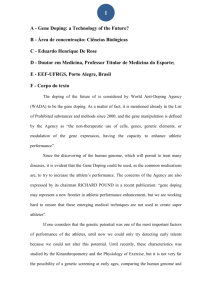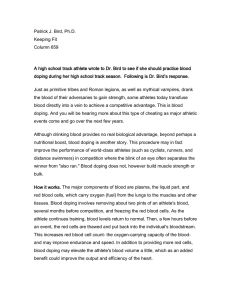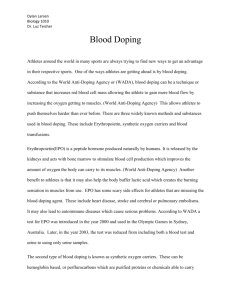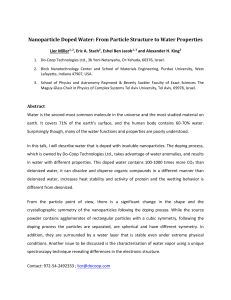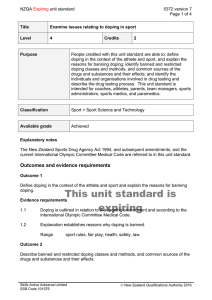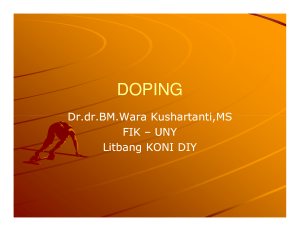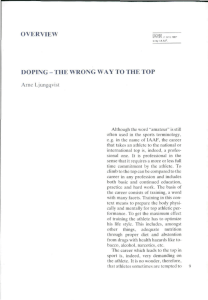Doping en los Juegos Olímpicos
advertisement
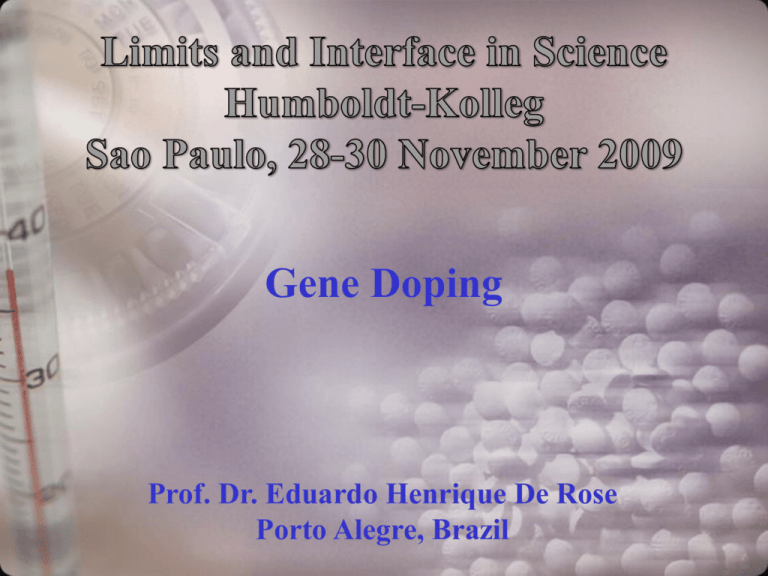
Gene Doping Prof. Dr. Eduardo Henrique De Rose Porto Alegre, Brazil Summary of the presentation • • • • • • • • Short history of doping in sports; Modern definition of doping; The future of doping: gene doping; Genetically based therapy and span; Selection of talents; Exemples of gene doping; Future possibilities; Conclusion. Why I choose Germany? 1911 – Physiology Laboratory presented in Dresdner; 1912 – First Sports Medicine Association founded; 1913 – Mallwitz receives the title of Sport Physician; 1917 – First Physical Education School founded; 1924 – First Sports Medicine Journal; 1928 – Foundation of FIMS in Saint Moritz, Switzerland. Olympic Games of 1936 in Berlin, Germany. Actual definition of doping • Increases artificially the performance; • It is a risk for the health of the athlete; • It is contrary to the spirit of sports. When two of the top three criteria are present, we have a case of doping. Genethically based therapyes are being developed and it will change soon the epidemiology of the diseases as we know it. The Life Span of Humanity 160 140 120 100 80 60 40 Life span 20 0 500,000 BC 40,000 BC 10,000 BC 1,800 AC 2,500 AC Detection of Talents • The detection of talents is actually done by observation of external anthropometric characteristics and in tests in Laboratories of Human Performance; • The human genetically map will permit, studying the related phenotypes of a child, to detect a predisposition for a specific activity. Rankinen and Bouchard: 2004 The human gene map for performance and health-related fitness phenotypes: the 2003 update The Belgian Blue Bull Myostatin • The Belgian Blue Bull demonstrates the effect of blocking the antigrowth factor myostatin. A natural genetic mutation in this breed produces a truncated, ineffective form of myostatin, which allows muscle growth to go unchecked. The absence of myostatin also interferes with fat deposition, making these “double-muscled” cattle exceptionally lean. Mighty Mouse - Lee and McPherron John Hopkins Medical Institution - 1997 Viral gene IGF-1 expression in trained rats Running on treadmill, and climbing with overweight (Source: Sweeney 2004) Genetically Engineered "Marathon Mouse" Keeps On Running Genetically Engineered "Marathon Mouse" Keeps On Running By enhancing the function of a single protein, Howard Hughes Medical Institute researchers have produced a “marathon mouse” with altered muscle composition and enough physical endurance to run twice as far as normal mice. Source: Howard Hughes Medical Institute, 2004



